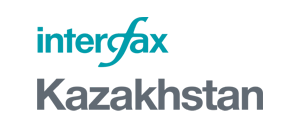Ekaterina Trofimova:
"KAZAKHSTAN'S BANKING SYSTEM WILL HARDLY BOUNCE BACK UNTIL 2011"

Standard & Poor's credit analyst Ekaterina Trofimova shared her insights into the banking sector trends and gave her forecasts to Interfax-Kazakhstan. She also updated the news agency on the standing of rating agencies and the idea of specialized banks.
- How do you assess the performance of the Kazakh banks in the first half?
- In the first half of 2010 we witnessed the same trends that we observed during 2009: a gradual stabilization and slow improvement of economic activity.
As we expected, the rise in lending has yet to begin, profitability is still low, and the outflow of foreign debt capital is ongoing. However, it is compensated by the continuing growth of deposits. For the year as a whole, we forecast that customers' deposits may rise by over 25%. It's not that easy to give a lending outlook, as it depends on the policy of the banks under restructuring and non-defaulted banks in respect of writing off debts and possible lien waivers. The pace of asset quality improvement is also an important factor to consider.
It is not clear yet, however, how much the banks will write off in loans and whether it will happen. We see that lately BTA Bank has been moving in that direction. Write-offs are actively administered by ATF and another two or three banks. All of those factors affect the lending system dynamics. We expect that the total loan portfolio of the banking system will change within the range of +10% / -10%. The quality loans, which account for over 50% in the total loan portfolio, may increase by 10% by the end of the year. Second-tier banks will become the driving force behind the recovery of the sector, especially those who are actively expanding their market share and taking advantage of the conservative policies of larger banks.
- What are your predictions on bank profits?
- Banks' profit depends primarily on the dynamics of reserves accumulation. We believe that the main mass of the required reserves has already been formed in the system, although we still see no sign of reserves restoring to prior levels, which is likely to happen in 2011 and bring up the profitability.
At the same time, in our view, the profit dynamics do very little to show the real profitability of the banking business in Kazakhstan, which plummeted during the crisis. We are entering into a new phase of gradual recovery, but we still expect the profitability to be significantly lower than in the pre-crisis period. The low profitability prediction is based on highly conservative lending policies, more intensive price competition, declining interest margins and a shrinking pool of high quality customers.
In addition, we see the banks' changing their funding sources from borrowing to domestic funding, in particular, client deposits, which are more expensive in terms of their resource-and cost-intensity.
Servicing a $10-million sum in deposits costs much more in terms of labor intensity and maintenance of the branch network than raising a bilateral loan for the same amount. The cost efficiency and resource intensively of the Kazakh banks will deteriorate considerably as compared to the pre-crisis period. Net interest margin has declined significantly, and we see no prerequisites, even in a post-crisis period, for its recovery to the pre-crisis levels. In the next 2-3 years it will probably not exceed 5%.
- Do you expect a steady improvement any time soon?
- It's hard to give any specific forecasts, as the markets remain very volatile. The banking sector is in fact a mirror image of the situation in the economy. Despite the fact that in the recent months Kazakhstan has been demonstrating high performance, the growth is primarily related to the exporting sectors, which does not mean a recovery of the market in general. Therefore, it's premature to talk about a stable growth in the banking sector until improvements are seen in the main segments of the economy.
The revitalization of the banking sector is not expected until 2011, most likely its second half.
Kazakhstan's banking system burdened by a heavy load of problem loans is recovering from the crisis. We expect the quality of assets to bounce back to the pre-crisis level within a period from two to five years, provided that current positive macroeconomic trends are maintained. New failures in the economy or a new recession on the world markets may hold back the recovery for a longer period.
- What's your view on problem loans?
- We can see that the problem debt including restructured loans accounts for 40%-50%, but we decline to make any accurate estimates given the volatile situation and uncertainty on the global capital markets. We do not rule out further deterioration, but it will be marginal. In 2011, the trend may reverse and we will see a gradual reduction in the bad loan share due to the growth of the total loan portfolio and gradual rehabilitation of problem loans.
Almost one third of the above mentioned amount of bad loans (40-50%) is highly problematic and there is a very slim chance for their recovery. This share can be quite comfortably covered by accumulated reserves. Reserve accumulation policies applied by the banks and the State Agency for Financial Supervision dealt a significant blow to the profits. Nevertheless, said policies can help to level the future write-offs for bad loans. The reserves will remain a burden on the banks' balance sheets for quite a long time; such counterweight to bad loans will boost the banks' credit activity over time.
- How would you assess the restructuring of 2 Kazakh banks?
- It is obvious, that the government's decision to rescue these banks and restructure their debts has reduced panic that can adversely affect the banking business. We are very positive about the rapid completion of the restructuring process, especially in the case of Temirbank. It was completed within less than a year, which according to the international standards, is a very quick and efficient result, especially for emerging markets. Debt repayment levels proposed by investors are by far higher than those we have seen in the CIS regions during previous crises.
The completion of a restructuring process is a very important psychological turning point for both foreign investors and the domestic market. However it is too early to talk about full crystallization of Kazakhstan's banking business. The restructuring of the banking system and banks, in the broadest sense is not completed as it involves complicated processes for the restoration of the banks' business structures and business activities and this requires time.
We have witnessed that the structure of Kazakhstan's banking system has become more segmented as a result of the crisis. As opposed to many other international examples, when a crisis leads to the consolidation of the banking system, the fragmentation in Kazakhstan's banking sector only increased highlighting that the republic hasn't faced such a crisis before. The number of banks has increased; medium-sized banks are taking market shares away from the major banks, which have slowed down their development. Thus, the level of the system's fragmentation has increased slightly although it didn't fundamentally change the balance of power.
The future structure of Kazakhstan's banking system will depend on the fate of the banks under restructuring. Their aggressiveness and market share will depend on who will become their final owner. Banks that have not defaulted are also rethinking their position in the market and their strategies. There may be some changes both in individual business segments and general business approach.
It is clear that the crisis has triggered the growth of conservatism, the improvement of decision-making, that have certainly reduced the banks' ambitions and their expansion. The banking business will grow much slower and much more carefully at this new development stage than prior to the crisis.
The crisis has demonstrated that Kazakhstan's banking business can't fulfill the role of the economy's driving engine and it can't develop separately from the real economy sector and the population.
The crisis in Kazakhstan has demonstrated the structural problems we were talking about before the crisis: the absence of fundamental support in the form of internal resources and the insufficient quality of the loan portfolio and, as a result, a poor quality of domestic borrowers.
It is good to see that the banks and regulators understood the problem and started working on it. We hope that these basics would form a new platform for the quality development of the banking sector. At the same time it is necessary to understand that the development is going to be much slower, less dynamic and less profitable. And at the moment we are not entirely certain whether the banking community, enterprises and even the government are ready for this in the long run. Thus, there is one important question remaining - if the recently increased conservatism will prove to be sustainable in the long run, because a negative experience usually gets quickly forgotten.
- Which risks are still most pressing for the banks this year?
- As the liquidity supply is improving, now the credit risk has come first and will be a most pressing problem for the banks in the next twelve or eighteen months. The credit risk involves handling with the existing problem debts. Today we can see the banks offering new loans. However, they are insignificant if speaking in terms of the whole banking system, which is still focused on the old debts. The new loans are much better if compared with the old portfolio as the risk factor is now handled more accurately and, that is why, the credit risk is mainly associated with the old loan portfolio.
- There are quite opposite opinions here in Kazakhstan about the specialized banks. What is your vision and forecasts in this respect?
- The world community has gained quite different experience in such a financial area as operation of the specialized banks with state participation and has not offered a universal solution for success. The success would depend on a variety of specific factors, such as the existing economic situation, the ownership structure and even a human factor, when the competence and professionalism of a given team of specialists are the key to success.
Interventions by the authorities usually have an adverse impact both on the commercial potential and efficiency of such banks. In emerging economies, including Kazakhstan, which have been severely affected by the crisis and which have to restore some of their systems from scratch, the state-owned specialized banks may be very efficient in the social and most sensitive sectors and industries of the economy. However, the state participation in such projects should be limited because the economic leverages always help find the right solutions for the economies that are efficiently controlled by the government, which might not have direct involvement.
- Recently Kazakhstan opened a first Islamic bank, the second one, which is going to be established soon, will be with the participation of the Development Bank of Kazakhstan. How would you assess their potential?
- The Islamic banks are rapidly expanding on the international financial markets. However, the Islamic banking business is very specific, regionally and ethnically, and mainly developing in Asia and the Middle East. The interest of the Islamic banks in Kazakhstan is a positive fact, in our opinion, but we do not expect them to become of paramount importance in the mid-term as the Islamic banks are very specific in their nature and do not aim for a large market share. Any diversification of financial sources for the Kazakhstan-based banks and borrowers is another step forward. However, we cannot see it becoming a common practice.
- The head of the Kazakh National Bank, Grigory Marchenko, once said that the population should get used to market volatility to prevent panicking in case of changes in the exchange rates. Do you agree with him?
- That is very wise advice. In fact, the exchange rate in many of the CIS countries is much more than a financial indicator. During the post-Soviet years the exchange rate has been viewed as important indicator of the economic stability. Abrupt fluctuations in the exchange rates lead to social turmoil and even panicking, which adversely affects the financial sector and the banking system. Of course, such an attitude should be changed so that the population, the economy and the banks will become resistant to exchange rate fluctuations. However, this cannot be achieved in the short term but will require a certain evolutionary process, which will take time.
The level of financial awareness among the population and even the businessmen is very low in Kazakhstan. This is a very important problem that affects various aspects of the life. That is why the educational programs here are a must. The banks may have to change their images. The state authorities play a very important role in helping build confidence in the banking system and attracting financial resources. Currently, there are practically no social advertisements associated with the banks, while advertisements of deposits and loans are in great number. There are no TV shows to educate the population in a simple and easy way. Many people still do not know how to operate an ATM.
- By the way, the head of the National Bank once said that the rating agencies discredited themselves during the crisis. Many experts, not only from Kazakhstan, share this opinion. What is S&P doing to restore confidence?
- Answering to your question, I can say that we have not lost any clients in the CIS region. Very few ratings have been withdrawn. We have significantly improved our educational efforts at explaining the investors, mass media and market players what we are doing and why. Of course, the crisis has shown that our ratings, their meaning and our forecasts are not understood well enough. To improve the situation we have to take additional effort and we are doing so now. We have become more meticulous when adjusting our methodologies, mainly as applied to the structured finance. However, even our traditional rating methodologies sometimes need to be adjusted in the changing market conditions.
- Thank you for the interview!
September, 2010
й 2009 Interfax-Kazakhstan news agency
References are obligatory
September, 2010
© 2025 Interfax-Kazakhstan news agency
Copying and use of these materials without reference to the source is prohibited
Archive





